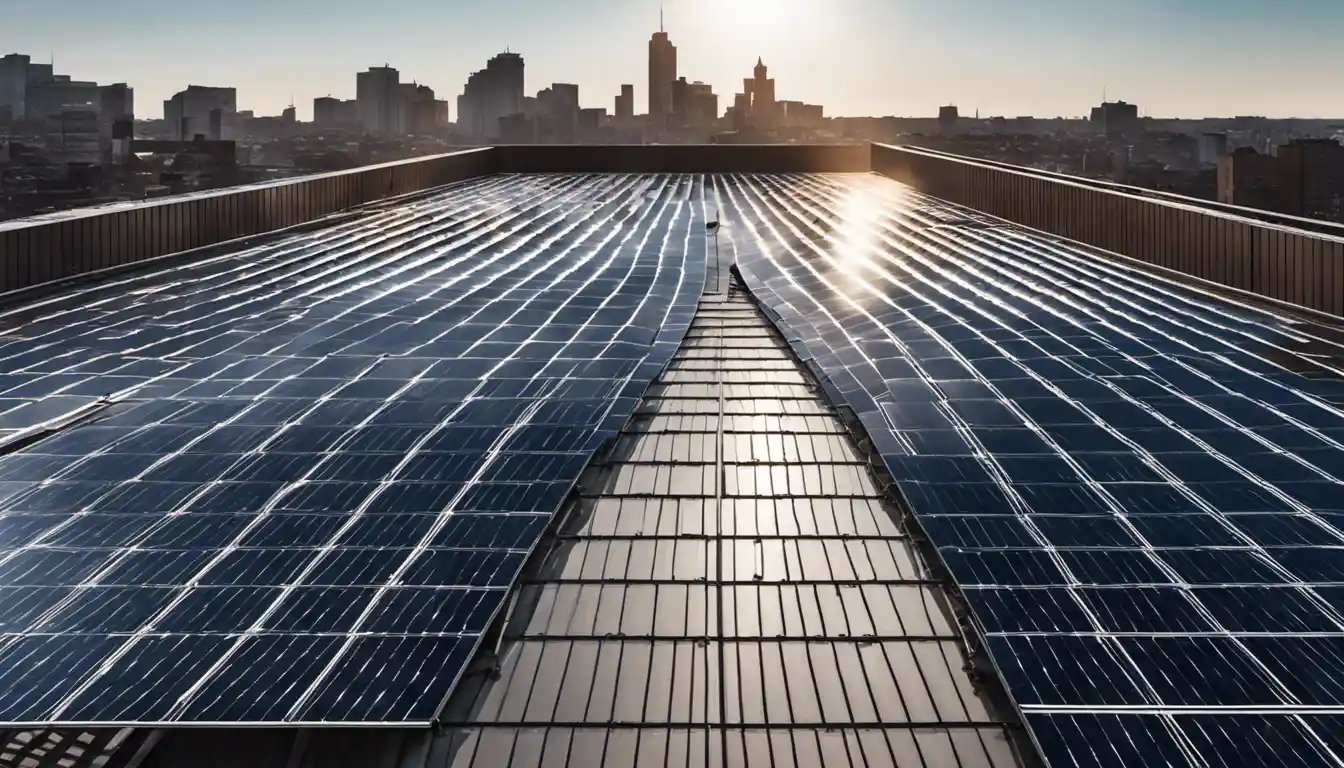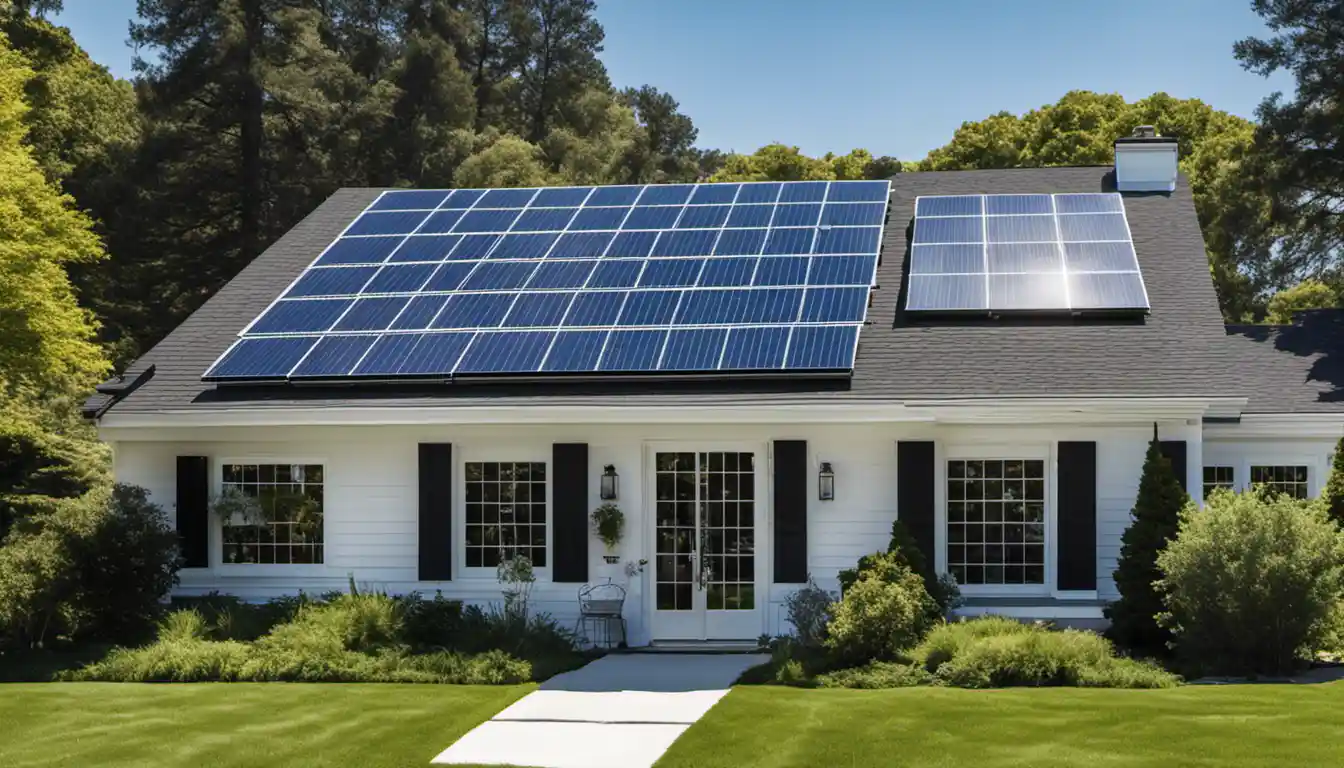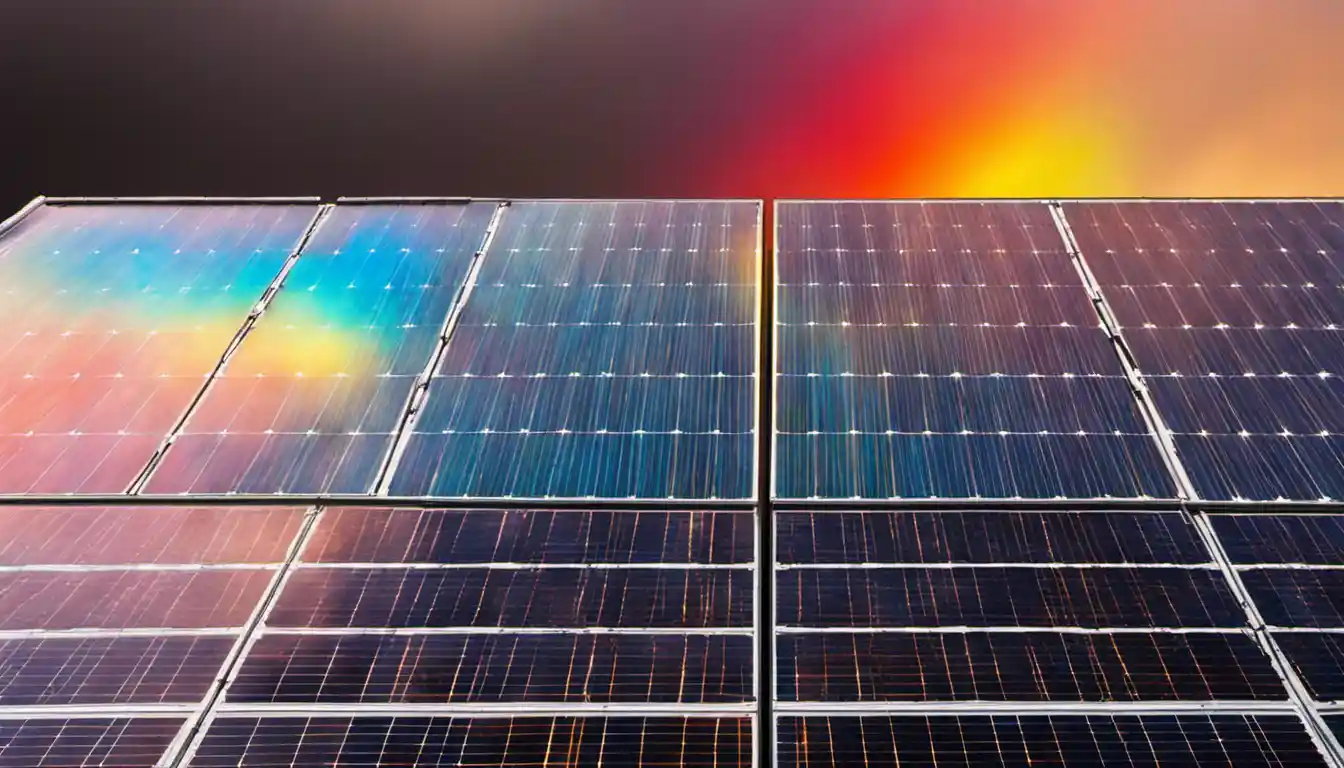What Are Monocrystalline Solar Panels?
Monocrystalline solar panels are made from a single crystal structure and offer the highest efficiency rates since they are made out of the highest-grade silicon. On the other hand, amorphous solar panels, also known as thin-film panels, are made by placing a thin layer of silicone on a base material such as glass or metal, and while they are cheaper and flexible, their efficiency is significantly lower than monocrystalline panels.
The Working Principle of Monocrystalline Solar Panels
Monocrystalline solar panels operate under the photovoltaic effect, a theory that Albert Einstein first proposed. The process begins when solar energy disrupts the balance of a solar cell’s electrons and sets electrons in motion, which generates an electric current. Remember the one elementary rule: energy cannot be created or destroyed. Here’s where Einstein comes in, explaining how light particles (photons) can knock electrons off atoms to generate electricity.
Installation Process of Monocrystalline Solar Panels
Installing monocrystalline solar panels typically requires a qualified technician due to the complexity of the task. The installation process involves mounting the solar panels appropriately to ensure maximum sun exposure, connecting them to an inverter to convert the produced DC power into AC power usable in most home devices, and wiring them to your electrical system. However, these steps vary depending on your specific installation.
Manufacturing Process of Monocrystalline Solar Panels
Monocrystalline solar panels are created by growing a single crystal structure. The process begins by placing a seed crystal in molten silicon. This seed is then carefully drawn up with the molten silicon forming a shell around it, which cools and solidifies into a single crystal silicon structure, hence the name monocrystalline.
Understanding Amorphous Solar Panels
Functionality Explained: How Do Amorphous Solar Panels Work?
Amorphous solar panels operate similarly to their monocrystalline counterparts, by using the photovoltaic effect. However, the key difference between amorphous and monocrystalline solar panels lies in their structure. Amorphous panels function by using thin layers of silicon rather than a single crystal structure.
A Look at How Amorphous Solar Panels Are Installed

The installation process is similar for amorphous solar panels. They need to be correctly positioned for maximum sun exposure, connected to an inverter, and properly wired. However, the flexibility of amorphous panels allows for more diverse and customizable installations.
Production: How Are Amorphous Solar Panels Made?
Amorphous solar panels are made by depositing a thin layer of silicon onto a backing substrate. This process requires less silicon, making amorphous panels relatively cheaper to produce and much more flexible than their monocrystalline counterparts.
Evaluating Efficiency: Monocrystalline vs Amorphous Solar Panels
While it’s clear that there are differences between amorphous and monocrystalline solar panels, it’s the efficiency comparison that often influences the decision-making process.
Monocrystalline Panels’ Efficiency Rates
Monocrystalline panels lead the pack when it comes to efficiency. Thanks to their single crystal structure, they have an efficiency rate that ranges from 15% to 20%. This essentially means that they convert more sunlight into electricity compared to other types of panels.
Amorphous Panels’ Efficiency Comparisons
On the other hand, amorphous solar panels have a relatively lower efficiency rate, typically around 7% to 10%. While these rates might seem expressly efficiency-challenged, amorphous panels have one advantage: they perform considerably better in low-light conditions compared to monocrystalline panels.
Common Questions About Monocrystalline and Amorphous Panels
Still undecided on what suits you between monocrystalline and amorphous panels? The following common questions about lifespan and superiority may help you to make an informed decision.
How Long Can You Expect Amorphous Solar Panels to Last?

While amorphous solar panels generally promise cheaper installation cost, their lifespan is shorter. Normally, amorphous panels can last for 15 to 20 years, but they also degrade faster, which can significantly reduce their power output over time.
What is the Lifespan of Monocrystalline Solar Panels?
Monocrystalline solar panels are known for their durability and long lifespan. You can expect them to last anywhere from 25 to 35 years or more. They degrade at a much slower rate and can continue to produce a significant amount of power even past their guaranteed life.
Which type is Superior: Amorphous or Monocrystalline Solar Panels?
The question of superiority between amorphous and monocrystalline solar panels depends largely on your specific needs. If initial cost, space availability, and flexibility are your concerns, amorphous solar panels might be your best bet. However, if you’re looking for efficiency, durability, and long-term investment, monocrystalline panels are superior.
Distinguishing Amorphous from Monocrystalline Panels: Key Differences
While both types of solar panels help reduce greenhouse gas emissions by providing renewable energy, their differences in materials, efficiency, lifespan, and cost all contribute to the decision-making process.
Material Differences
Monocrystalline solar panels are built from a single, pure silicon crystal, while amorphous panels are made by layering thin silicon on a substrate. This structural difference is central in determining efficiency, flexibility, and durability.
Efficiency Differences
Monocrystalline solar panels hold a clear advantage when it comes to efficiency, boasting a higher conversion rate of solar energy to electricity. However, amorphous panels perform better in less-than-ideal light conditions.
Lifespan Differences

The lifespan of amorphous solar panels is shorter when compared to monocrystalline panels. This is something to consider when evaluating the overall return on investment.
Cost Differences
Amorphous solar panels are cheaper to produce and install but have a shorter lifespan and lower efficiency. Monocrystalline panels are more costly upfront, but their high efficiency and durability may offer better long-term value.
Factors to Consider When Selecting Solar Panels
Choosing between monocrystalline and amorphous solar panels requires considering your specific needs and conditions. Here are some factors to look at:
Cost Efficiency
Consider the initial expense against the long-term benefits. Monocrystalline panels might be pricier, but their high efficiency and longer lifespan can offer better value over the years.
Space Requirement
Monocrystalline panels require less space to produce the same amount of power as amorphous panels due to their higher efficiency.
Type Suitability
Consider where and how you will be using the solar panels. For instance, if you are in an area with less direct sunlight, or if you need lightweight, flexible solar panels for a mobile application, amorphous panels can be more suitable.
Wrapping It Up: Decision-Making in the Solar Panel Selection Process
The contest between monocrystalline vs amorphous solar panels doesn’t have a one-size-fits-all winner. It’s all about identifying your specific needs, goals, and constraints. Hopefully, this comprehensive guide has made these considerations clearer for you. For more on the different types of solar panels, be sure to explore further. Remember, your switch to solar is contributing to a sustainable, low-carbon future. That, dear readers, is a win in everyone’s books!



